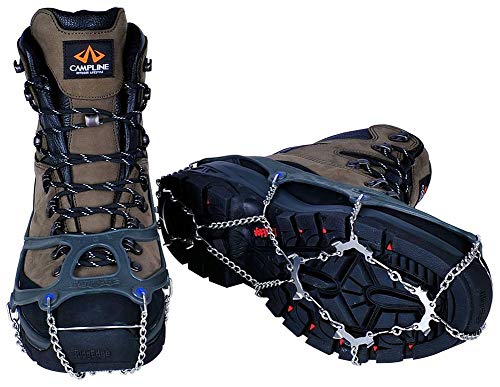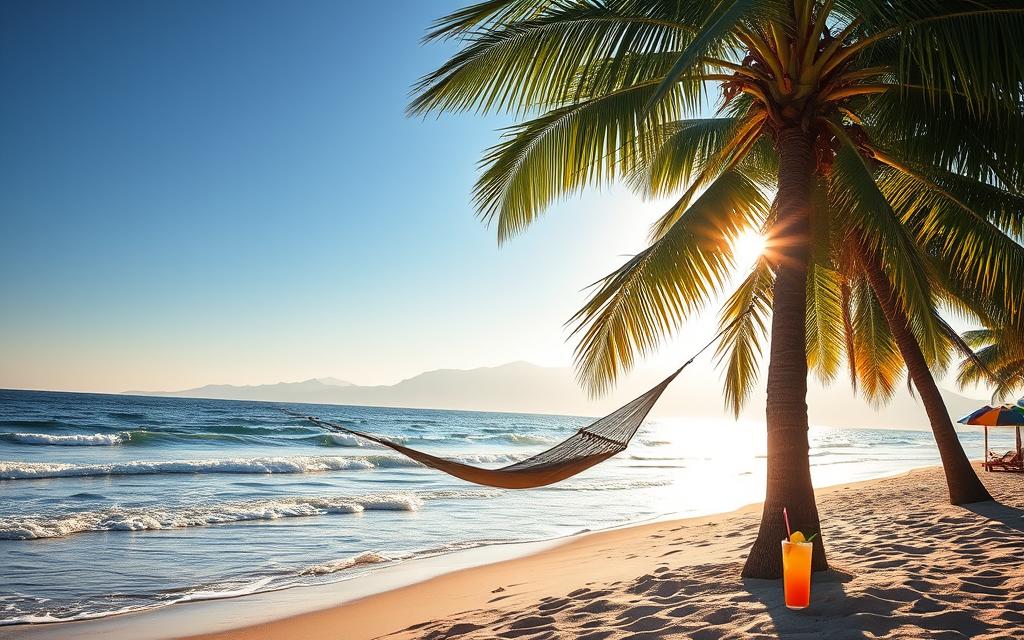Traction is paramount while hiking over ice, snow, or at high altitudes since it will directly impact your comfort, safety, and performance.
However, deciding between crampons vs microspikes is often challenging as there are so many factors you have to consider.
This guide aims to help you make an informed decision by taking an in-depth look at crampons and microspikes’ suitability for winter hiking adventures.
We will look at the key differences and considerations to keep in mind before recommending the best crampons and microspikes in the market.
Crampons vs Microspikes: Brief Information
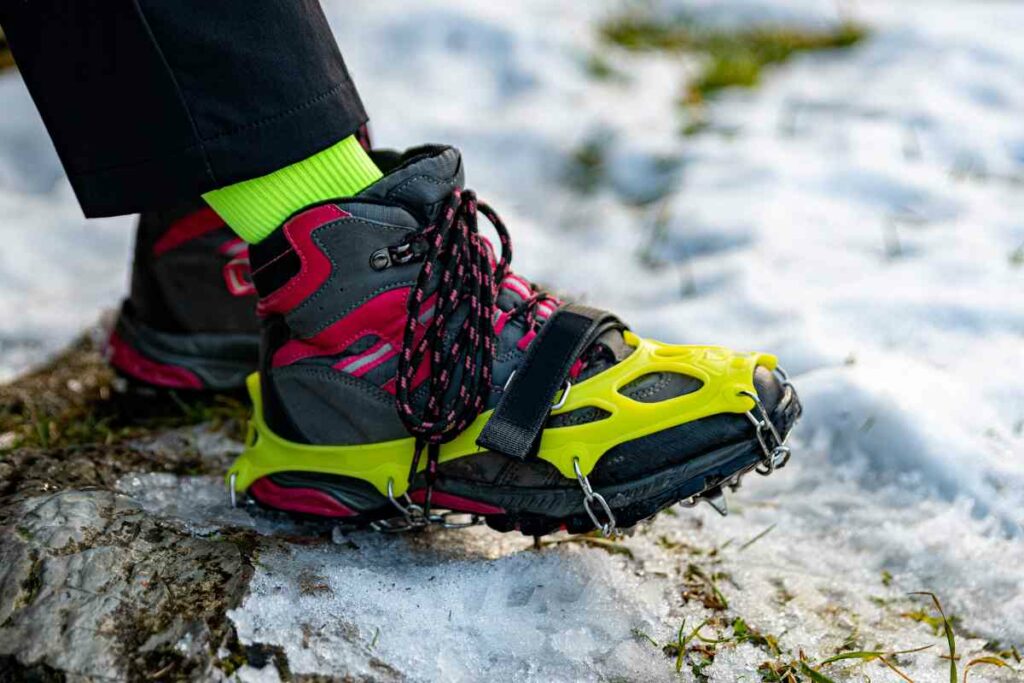
Before deciding which of these traction devices is best suited for your hiking adventures, let’s know a little bit more about what crampons and microspikes are all about.
Crampons
Basically, a crampon is a set of metal spikes/hooks/prongs you attach to the sole of your hiking boot to give you more traction as you transverse icy and snowy terrain.
Pros
Cons
Primarily, there are three types of crampons based on their binding system:
- Strap-on crampons: attach to boots using straps. While they are versatile and inexpensive, they have the least secure fit and are time-consuming to fit and tighten.
- Step-in crampons: attach to boots using metal toe bail and heel clip. They are best suited for steep terrain and technical activities as they are the most secure type of crampon.
- Hybrid crampons: combine the use of both strap-on and step-in binding systems. It is relatively cheaper and has a broader range of boot compatibility for moderate hiking adventures.
The longer and more aggressive the crampon’s spikes, the better its suitability for extreme hiking conditions such as steeper slopes or hard snow.
Microspikes
Microspikes are lightweight traction devices with a rubber harness and small metal spikes or chains.
Pros
Cons
The harness ensures a secure and snug fit onto your boot’s sole, while strategically placed prongs provide a stable walking platform on various hiking terrains.
As such, microspikes are popular with backpackers, hikers, trail runners, and winter outdoor enthusiasts.
Differences Between Crampons and Microspikes
Understanding the differences between crampons and microspikes will help identify the perfect gear for your hiking adventure.
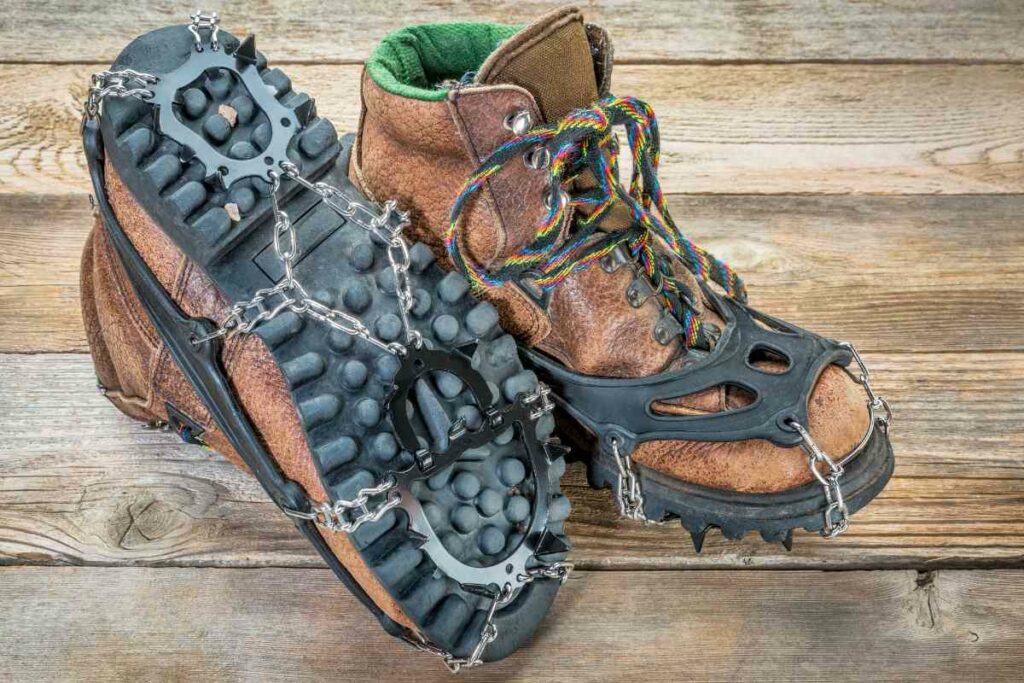
Let’s look at the five major differences:
Traction
Crampons have longer and more aggressive spikes biting into the ice, which provide superior traction on steep and icy slopes.
Besides, you have better stability for challenging technical activities such as high-altitude mountaineering and traversing glaciers.
Microspikes typically have shorter, less aggressive spikes to facilitate a faster hiking pace.
While they provide adequate grip on moderately steep icy trails, it will be quite challenging to maneuver steeper slopes when ice and rock climbing.
Winner: Crampons
Comfort
Crampons usually require boots with rigid soles for easier attachment to the binding system.
While the rigidity provides stability, it makes crampons cumbersome for long periods. If you are going for a long hike, foot discomfort, especially around the ankle, is common.
Microspikes are lighter and versatile, making them a more comfortable option.
Since they allow for more natural foot movement, you can also run with them to increase or maintain a steady hiking pace.
Besides, microspikes are usually compact enough to fit in your backpack without adding much weight to your shoulders during the hike.
Winner: Microspikes
Durability
Crampon’s sturdy frame ensures the large spikes will bite into even the most stubborn ice and snow, providing reliable traction and stability for many winters to come.
Microspikes have a less sturdy construction to enhance mobility.
Unfortunately, this makes the metal spikes or chains wear down much faster than crampons.
When it comes to durability, proper maintenance is the key to the longevity and effectiveness of your crampons or microspikes.
Clean the metal spikes/chains after every use and dry them thoroughly before storage to prevent rusting or corrosion.
Winner: Crampons
Ease of Use
Microspikes are easy to use for hikers of all skill levels.
Lightweight and quick to put on, you will hit the trail in no time.
Innovative designs with stretchable rubber harnesses and quick-release buckles have made them more user-friendly, increasing their appeal among outdoor enthusiasts.
In retrospect, crampons are more challenging to put on and use.
For full functionality, you must precisely align the crampons with your boot’s toe and heel welts.
Moreover, they are bulky and not the easiest to walk with if you’re a first-time user.
Winner: Microspikes
Pricing
While microspikes are cheaper than crampons, you can’t ignore the significant difference in functionality.
Crampons are more durable and suited for heavy-duty hiking, which justifies why they typically cost more.
Besides, a slip or fall can easily be fatal in such high altitudes, so you must get quality traction gear for better performance and safety.
Winner: Draw
Factors to Consider When Choosing Between Crampons and Microspikes
Choosing the right pair of crampons or microspikes depends on several factors, including terrain conditions, boot compatibility, and your hiking expertise.
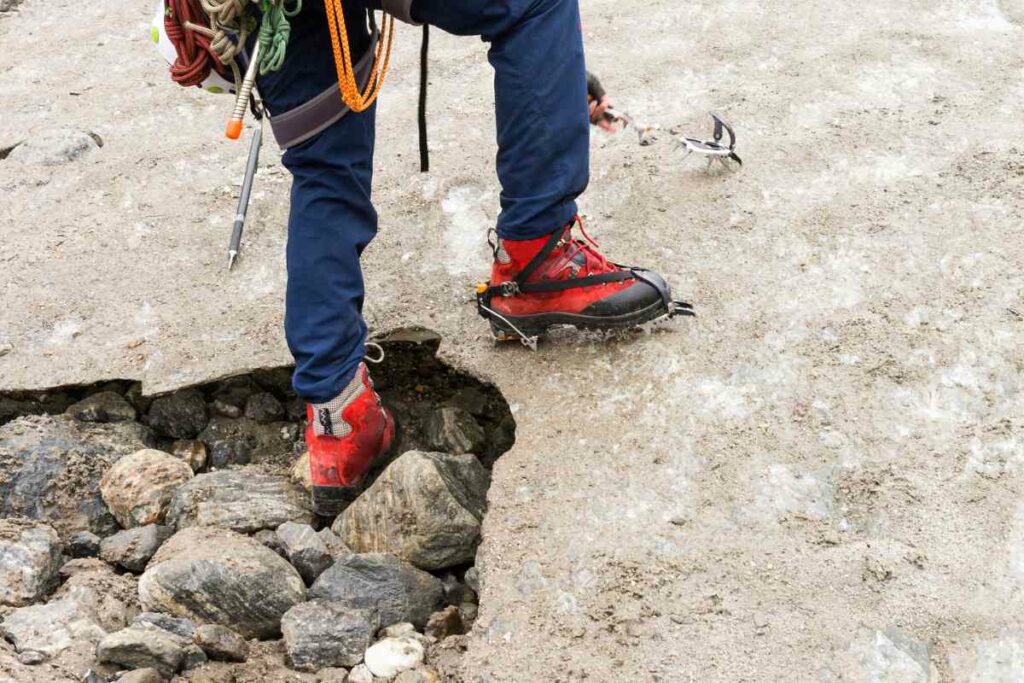
Let’s break it down further:
Terrain
The terrain type is vital when choosing between crampons and microspikes.
If you plan to hike in steep and extreme trail conditions, crampons will suffice for their superior traction and stability.
While microspikes may not be suitable for vertical ice-climbing, they come to life when hiking gentle to moderate slope trails with icy or packed snow conditions.
Their lighter and flexible design keeps your ankle and foot moving independently so you can run, jog, or trot to maintain your hiking speed.
Boot Compatibility
Your boot’s type and sole configuration determines which traction system you will wear.
Step-in crampons are your best option if you have heavy boots with stiff soles.
On the other hand, strap-ons work best with highly flexible soles or, if you doubt which binding system to opt for.
Microspikes since have fantastic boot compatibility. You can wear them with a wide range of footwear, from hiking boots to trail runners and even PAC boots.
Take a look
However, it is essential to note microspikes excel in less technical hiking activities, so do not compromise your safety, especially when ice climbing.
Skill Level and Experience
Your hiking skillset and experience are crucial when choosing between crampons and microspikes. Crampons are best suited for experienced mountaineers and winter hikers.
They are more challenging to use, adjust, and maintain, especially the step-in crampons. The sharp spikes may also tear your clothes and skin if you don’t exercise caution.
Alternatively, microspikes may be more suitable if you have limited experience hiking in icy or snowy conditions.
They are easier to use even for beginners, more agile, and require less technical outdoor skills.
Also helpful
Crampons vs Microspikes for Hiking: Our Top Picks
We are here to ensure that winter conditions do not slow you down.
After thorough research and sampling of different products, here are our top picks for crampons and microspikes:
Crampons
For an enhanced hiking experience for your little adventurers, consider the High Stream Kids Ice Cleats as the ideal choice when seeking reliable crampons tailored for children.
Microspikes
For trail running enthusiasts seeking exceptional traction and performance, the CAMP Snowline Chainsen Trail Light is the go-to choice for Microspikes.
Frequently Asked Questions
How many spikes should your crampon or microspikes have?
While most crampons and microspikes have 10-18 prongs, the number depends on your hiking conditions.
The steeper and more demanding the terrain, the more spikes you’ll need for mobility and stability. For general mountaineering, the standard ten spikes will provide sufficient traction.
Why are anti-balling plates necessary when hiking in winter?
Anti-balling or snow plates ensure crampon spikes shed off snow more efficiently as you hike.
Preventing snow build-up increases your traction and stability while decreasing the risk of slips and falls. Besides, you move more smoothly without expending too much energy from the drag caused by snow gradually accumulating on the spikes.
How do you determine the aggressiveness of a crampon or microspikes?
Crampons are more aggressive than microspikes primarily because of the length of their spikes. Longer spikes are more aggressive as they cut through snow or ice more efficiently than shorter ones.
Besides the spike length, the spikes’ number, sharpness, and closeness also determine how aggressive the traction device would be during hiking.
Take a quick look
Final Words
Picking the right traction gear is vital to any successful hiking expedition. Crampons have sufficient traction to make any icy, snowy, or rugged terrain your playground. On the other hand, microspikes are perfect if you are looking for lighter, flexible, and packable winter hiking footwear.
There is no clear winner between crampons and microspikes on which is the better traction gear for hiking, as it all comes down to the trail conditions and personal preferences. However, you are now adequately equipped to pick the correct gear for any backcountry hiking adventure.
Enjoy your escapades!
- The Secret Travel Locations Bloggers Haven’t Discovered Yet
- Stress-Free Breaks: Choosing the Perfect Getaway for Overworked Professionals
- Inside Secrets: The Quick Guide to Planning Your Dream Vacation
- Hidden Gems vs Tourist Spots: Saving Pounds on Your Next Vacation
- Master the Art of Travel Thrifting: Tips from the Pros
- Travel Like a Spy: Secret Skills for Safe Adventuring


